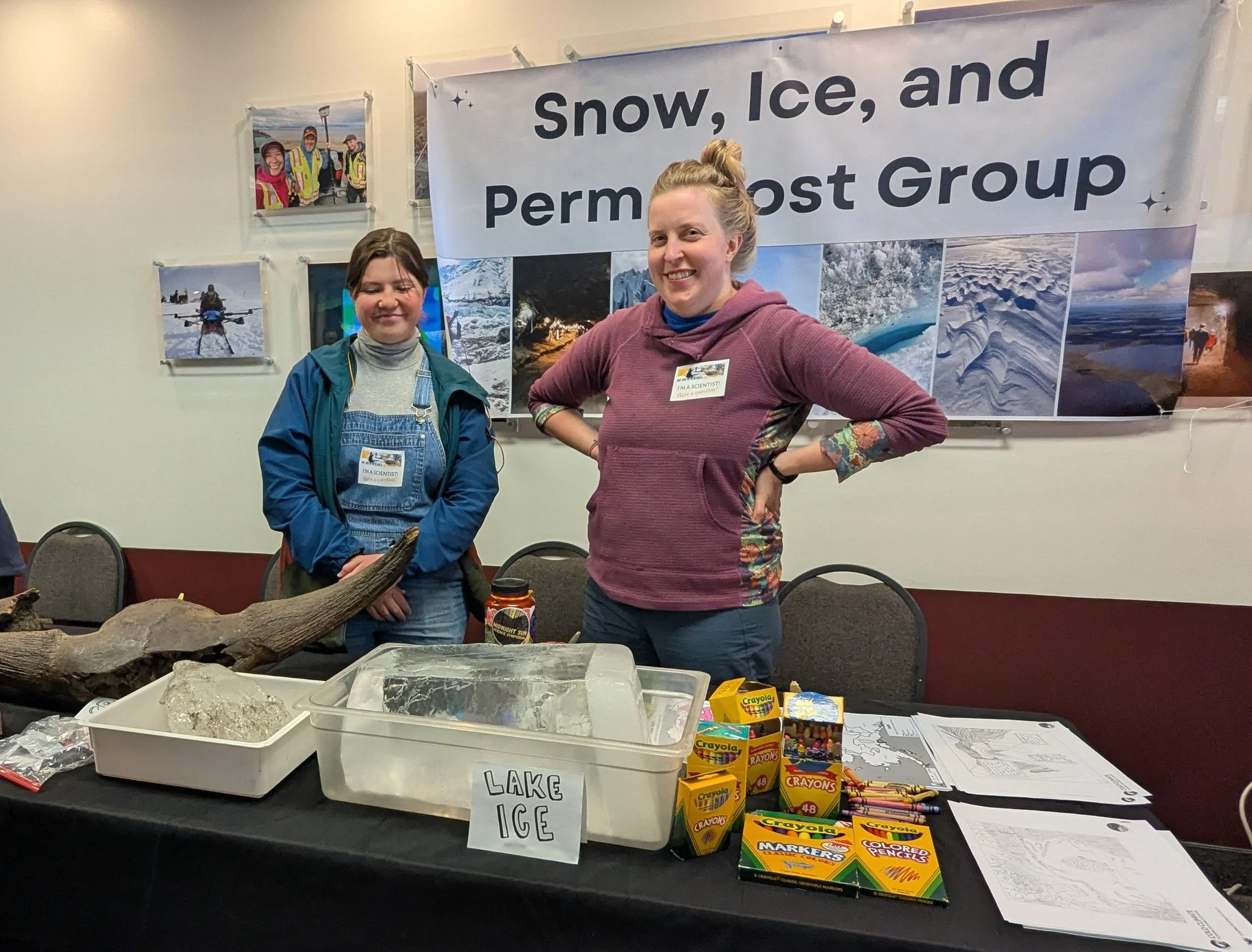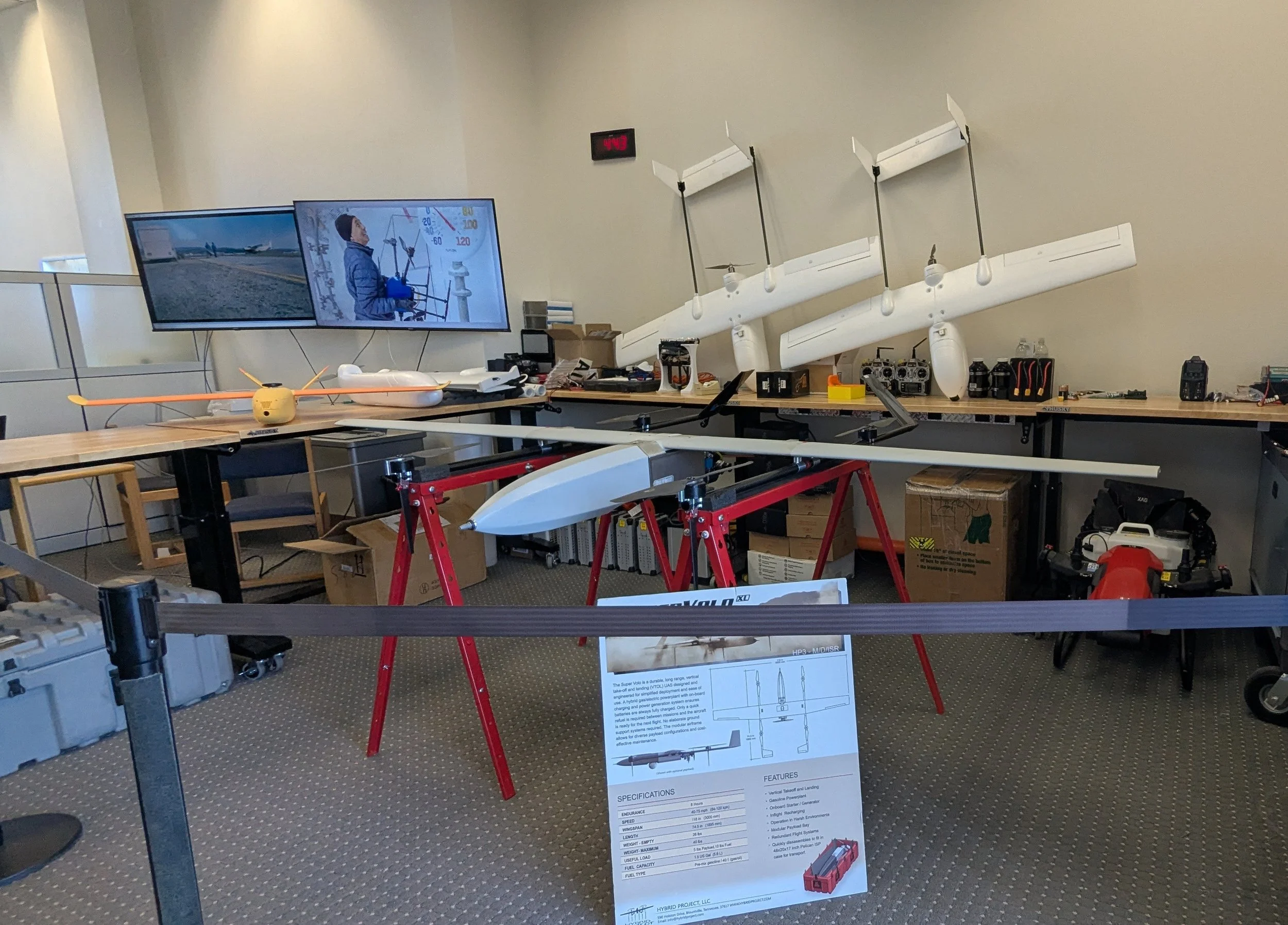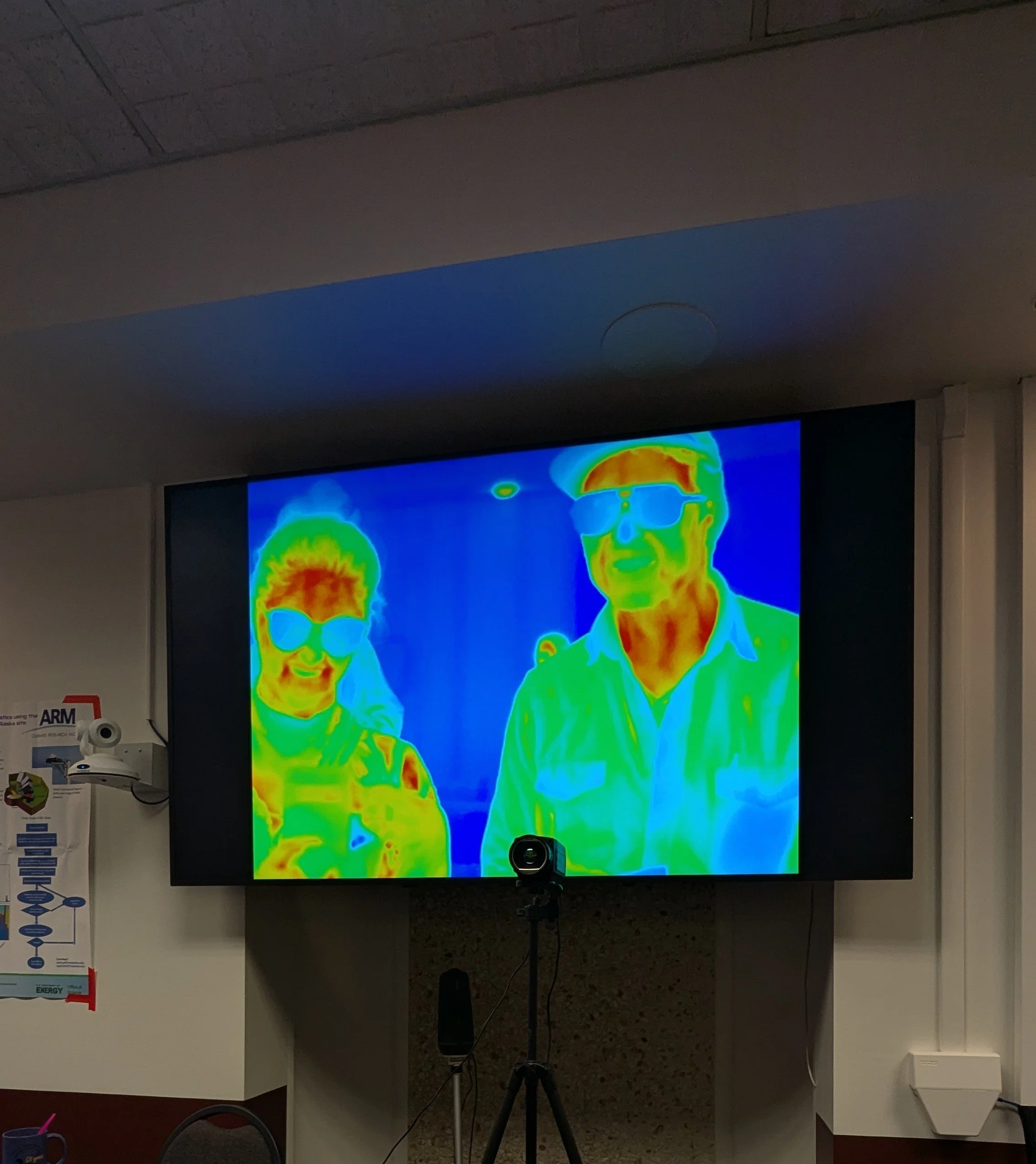UAF’s Arctic Research Open House Brings Science Discovery to All Ages
Photos and Story By Amber McCain
A gorgeous day and a great turnout.
On a sun-soaked Thursday afternoon, the University of Alaska Fairbanks’ West Ridge transformed into the heart of exploration during the annual Arctic Research Open House, held May 15. With bright blue skies, a nice breeze, and ice cream on hand, the event created an atmosphere that was as warm and welcoming as it was educational.
The open house, organized by the Office of the Vice Chancellor for Research, brought together more than 20 research units across campus for a lively, hands-on showcase of Arctic science. Attendees of all ages were invited to explore labs, meet researchers, touch the tools of science, and in my case, touch a chunk of lake ice and sea ice, only to immediately regret it after realizing it was dirty. It was that kind of night: interactive, informal and full of small surprises.
Kyra Bornong, left, 2024 UAF Geophysical Institute Schaible Fellowship recipient and Celine Smith, right, Graduate Student Researcher, with Snow, Ice, and Permafrost.
For the first hour of the event, two Sun Star staff members joined Dr. Larry Hinzman, Vice Chancellor for Research and UAF’s President’s Arctic Professor. Hinzman walked us through the maze of exhibits and introduced us to scientists and communicators from across UAF’s research landscape. His introductions weren’t just informative; they opened doors for future collaboration between the Sun Star and the researchers doing some of the most important scientific work in the North.
One of the most impressive elements of the night was the depth of research being done right here at UAF — much of which the public doesn’t usually get to see up close. The campus was buzzing with curiosity. In one building, children peered through microscopes at plankton, while just down the hall, university students raced to put on survival suits and jump into a life raft. Outside, the College of Fisheries and Ocean Sciences turned the lawn into an Arctic marine field site. Across the Ridge, Toolik Field Station invited visitors into a fully immersive virtual reality tour of the tundra, complete with mosquito collection, permafrost monitoring and frozen lake skiing.
UAF drones on display at the Arctic Research Open House, showcasing technology used to monitor the changing Arctic.
At the NASA booth, we met Dr. Elizabeth (Liz) Hoy, a geographer and senior support scientist for NASA’s Arctic-Boreal Vulnerability Experiment (ABoVE).
“What happens in the Arctic doesn’t stay in the Arctic,” she said while telling us about how she applies remote sensing and high-performance computing to investigate environmental changes in northern ecosystems, including mapping wildfire burn severity and detecting methane hotspots.
Though I didn’t witness it myself, the Alaska Volcano Observatory had its scheduled lava pours, where researchers demonstrated volcanic behavior using real molten lava — an annual part of the fun.
Mites up close: Microarthropod abundance across a boreal forest riparian chronosequence.
Another standout from the night was learning about UAF’s cutting-edge drone work. This is something many attendees didn’t realize existed on campus (this reporter included). At the Alaska Center for Unmanned Aircraft Systems Integration (ACUASI) station, visitors could test a drone flight simulator and explore how UAF is using drones for volcano research, emergency response, remote deliveries and more. The university is even leading icing research with a specialized tower designed to study how drones operate in freezing conditions. It’s part of an effort to make drone operations safer and more useful across Alaska's vast and often isolated terrain.
Two of the Sun Star's team goofing off on the job interacting and learning as they go.
Throughout the evening, attendees collected stamps at stations for their Explorer Badge Challenge, earning entries into door prize drawings while learning something new at every stop. Along the way, we spoke with Rick Thoman, Alaska climate specialist at the International Arctic Research Center, whose new podcast, Alaska Weather Voices, launched earlier this week. The podcast explores the personal stories behind Alaska’s climate science, offering listeners a deeper understanding of the people and research driving the state's climate science efforts.
Whether you came for the ice cream, the lava, the drones, or the discovery, the Arctic Research Open House offered something for everyone. It was a celebration of learning, of the land we live on and of the people working to understand and protect it. If you missed it this year, don’t worry, it’ll be back next spring and we’ll be there to cover it.






